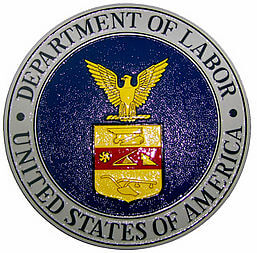
OFLC processes PERM applications for employers seeking to bring foreign workers into the United States and grants certifications in those cases where employers can demonstrate that there are not sufficient U.S. workers available, willing and qualified to perform the work at wages that meet or exceed the prevailing wage paid for the occupation in the area of intended employment. The PERM program is designed to ensure that the admission of foreign workers into the US on a permanent or temporary basis will not adversely affect the job opportunities, wages, and working conditions of US workers.
Employment based immigration is a complex process that may involve a number of government agencies within the Federal government, including the Department of Labor, the USCIS in the DHS, and the State Department.
Client Reviews

If You Want the Best Result Possible
“Mr. Shusterman and his law firm have represented both me personally and the nonprofit organization that I am associated with. The cases have ranged from the simple to the complex and contentious. Each case has been successfully completed. It is very simple – if you want the best result possible, then select the Law Offices of Carl Shusterman.”
- Richard B. Knapp, Chicago, Illinois
Read More Reviews
Zoom Consultations Available!
Department of Labor – Immigration Resources
- General Information
- FLAG
- Labor Condition Applications (LCAs)
- H-1B, H-1B1, and E-3 Temporary Visa Programs
- Administrative Law Judges & BALCA
- Occupational Information
- Prevailing Wages
- H-2A Farmworker Online Systems
- DOL-ETA Regions
Department of Labor – Related Pages
Department of Labor – General Information
- U.S. Department of Labor
- DOL’s Employment and Training Administration
- Office of Foreign Labor Certification Resource Page
- ETA Library
Foreign Labor Application Gateway – FLAG
- Foreign Labor Application Gateway
- Video 1: How to complete a 9141C application
- Video 2: How to complete a 9142C application
- Video 3: Support/Technical Help
- Video 4: How to Navigate through your new FLAG dashboard
- Video 5: Tips on addressing form validations for the 9141C and 9142C
- Video 6: How to create a FLAG account
- Video 7: How to submit a form application through FLAG
LABOR CONDITION APPLICATIONS (LCAs)
- Compliance with the H-1B Notice Requirement by Electronic Posting – DOL Wage & Hour Division (3-15-19)
- H-1B, H-1B1 and E-3 Specialty Workers
- Compliance Assistance — Wage and Hour Division Administered Immigration Programs
- LCA Regulations
H-1B, H-1B1, and E-3 Temporary Visa Programs
H-1B
The H-1B program allows employers to temporarily employ foreign workers in the U.S. on a nonimmigrant basis in specialty occupations or as fashion models of distinguished merit and ability. A specialty occupation requires the theoretical and practical application of a body of specialized knowledge and a bachelor’s degree or the equivalent in the specific specialty (e.g., sciences, medicine, health care, education, biotechnology, and business specialties, etc.).
Current laws limit the annual number of qualifying foreign workers who may be issued a visa or otherwise be provided H-1B status to 65,000 with an additional 20,000 under the H-1B advanced degree exemption. For additional information regarding the H-1B cap, cap qualifications and H-1B petitions, see the U.S. Citizenship and Immigration Services (USCIS) website.
H-1B1
The H-1B1 program allows employers to temporarily employ foreign workers from Chile and Singapore in the U.S. on a nonimmigrant basis in specialty occupations. Current laws limit the annual number of qualifying foreign workers who may be issued an H-1B1 visa to 6,800 with 1,400 from Chile and 5,400 from Singapore. For information regarding the H-1B1 cap, H-1B1 cap qualifications and H-1B1 petitions, see the USCIS website or Consular sections of the Department of State website for Chile and or Singapore.
E-3
The E-3 program allows employers to temporarily employ foreign workers from Australia in the U.S. on a nonimmigrant basis in specialty occupations. Current laws limit the annual number of qualifying foreign workers who may be issued an E-3 visa to 10,500 Australian nationals seeking temporary work in specialty occupations. For information regarding the E-3 cap, E-3 cap qualifications and E-3 petitions, see the USCIS website or Consular sections of the Department of State website for Australia.
ADMINISTRATIVE LAW JUDGES and BALCA
OCCUPATIONAL INFORMATION
- Occupational Outlook Handbook
- O*NET (Occupational Information Network)
- Dictionary of Occupational Titles
- Occupational Employment Statistics (OES) of the Bureau of Labor Statistics
PREVAILING WAGES
- Round 3 – Implementation of Revised Form ETA-9141 FAQ (7-16-21)
- Foreign Labor Certification Prevailing Wages
- Occupation Employment Statistics (OES) Program
- OES Search Wizard – Use if you need help finding the BLS area code or the occupation code.
- OES Quick Search – Use if you already know the area and occupation codes.
- Bureau of Labor Statistics
- Occupational Employment Statistics (Bureau of Labor Statistics)
H-2A FARMWORKER ONLINE SYSTEM
DOL-ETA REGIONS
- ETA Regional Offices
- Region 1 (Boston)
- Region 2 (Philadelphia)
- Region 3 (Atlanta)
- Region 4 (Dallas)
- Region 5 (Chicago)
- Region 6 (San Francisco)
PRACTICE ADVISORIES REGARDING DEPARTMENT OF LABOR
- OFLC Announces Final Decommission Of The Permanent Online System (August 2024)
- Litigation for Business Immigration Practitioners (8-20-18)
- Mandamus Litigation Against DOL to Address Delays in Prevailing Wage Determinations and Labor Certifications (11-6-16)
- Immigration Council Urges U.S. Department of Labor to Ensure Fairness (9-17-14)
- Simply Soup Ltd. d/b/a NY Soup Exchange – BALCA Foreign Labor Certification (PERM) Applications (8-29-14)
- Microsoft Corporation – BALCA (11-7-13)
- The Future of a Generation: How New Americans Will Help Support Retiring Baby Boomers (2-14-12)
